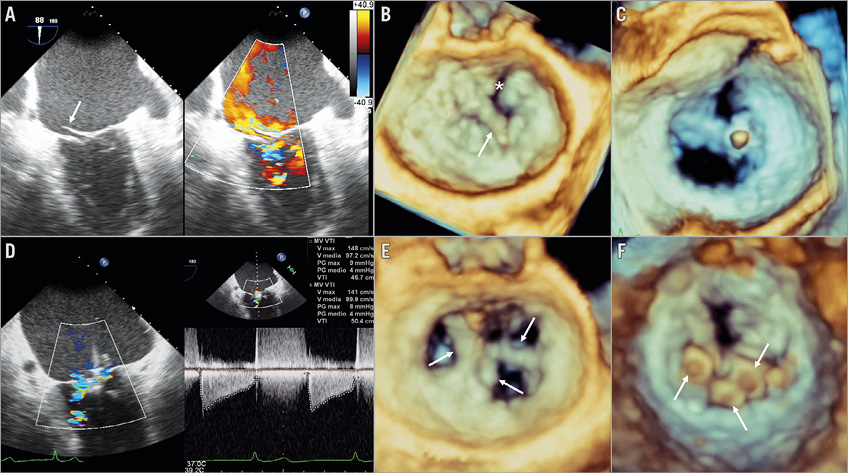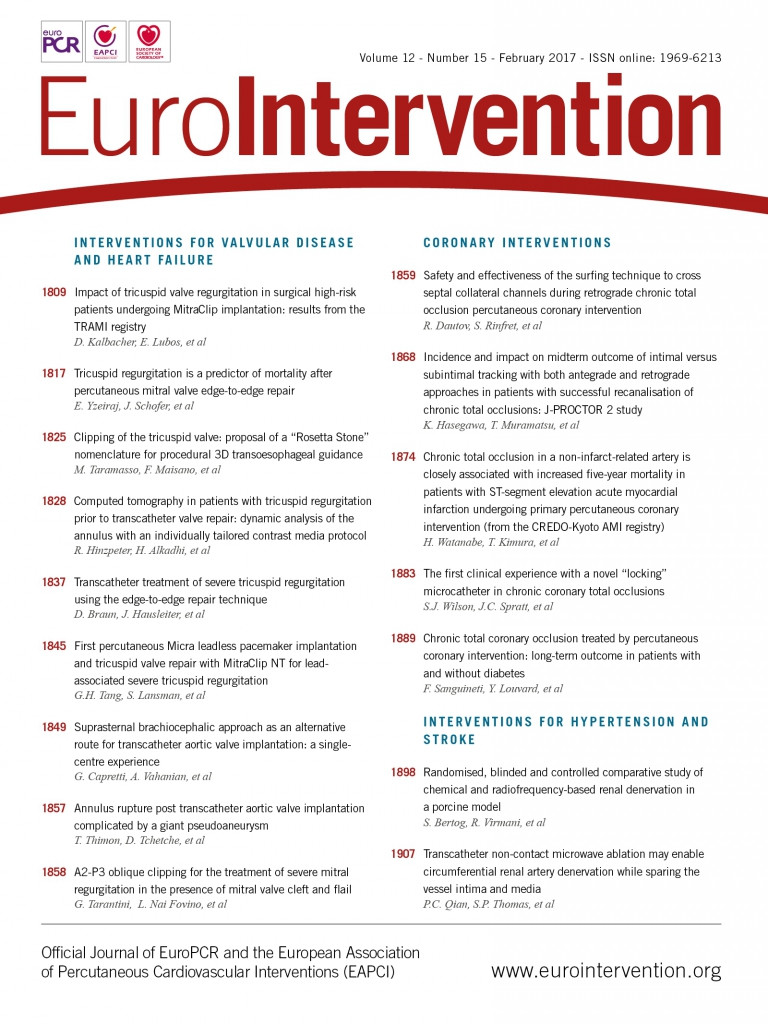

An 86-year-old male was admitted to our institution for dyspnoea. Three-dimensional transoesophageal echocardiography (TEE) showed severe mitral regurgitation (MR) caused by both A2 prolapse with a flail due to cord rupture and a cleft in the anterior mitral leaflet (Panel A, Panel B, Moving image 1). Given the prohibitive surgical risk, the patient was considered for MitraClip® (Abbott Vascular, Santa Clara, CA, USA) implantation.
After several unsuccessful attempts to perform an initial A2-P2 central grasp, the clip was rotated counterclockwise grasping the P3 scallop and the point of connection of a ruptured primary cord to the A2/A1 region, bridging the proximal part of the anterior cleft (Panel C, Moving image 2). Leaflet insertion assessment utilising intercommissural and left ventricular outflow tract views ensured that grasping was sufficient to prevent clip detachment. Following the implantation of two other clips (grasping A2/P2 and A1/P1), MR was reduced to grade 1+, with no significant residual mitral stenosis (Panel D-Panel F, Moving image 3, Moving image 4). Intraoperative TEE monitoring was performed with 3D atrial and X-plane from intercommissural views. Three-month follow-up showed persistence of good echocardiographic (MR grade 1+) and clinical (NYHA Class I) results.
This is the first report of MitraClip implantation in a rare and unfavourable anatomical condition, such as the coexistence of cleft and flail in the anterior mitral leaflet. The presence of a cleft is usually regarded as a contraindication to percutaneous repair, since the clip could worsen MR by displacing the clefted leaflet. Our “oblique” clipping allowed easier implantation of two other clips and the achievement of near complete MR reduction.
Acknowledgements
The authors would like to thank E. Adamovic (Engineer) for her precious technical support.
Conflict of interest statement
The authors have no conflicts of interest to declare.
Supplementary data
Moving image 1. Preprocedural 3D TEE atrial view of the mitral valve.
Moving image 2. Intraprocedural 3D TEE after the first “oblique” clipping.
Moving image 3. Postprocedural 3D TEE atrial view of the mitral valve.
Moving image 4. Postprocedural TEE Doppler showing near complete MR reduction.
Supplementary data
To read the full content of this article, please download the PDF.
Preprocedural 3D TEE atrial view of the mitral valve.
Intraprocedural 3D TEE after the first "oblique" clipping.
Postprocedural 3D TEE atrial view of the mitral valve.
Postprocedural TEE Doppler showing near complete MR reduction.

